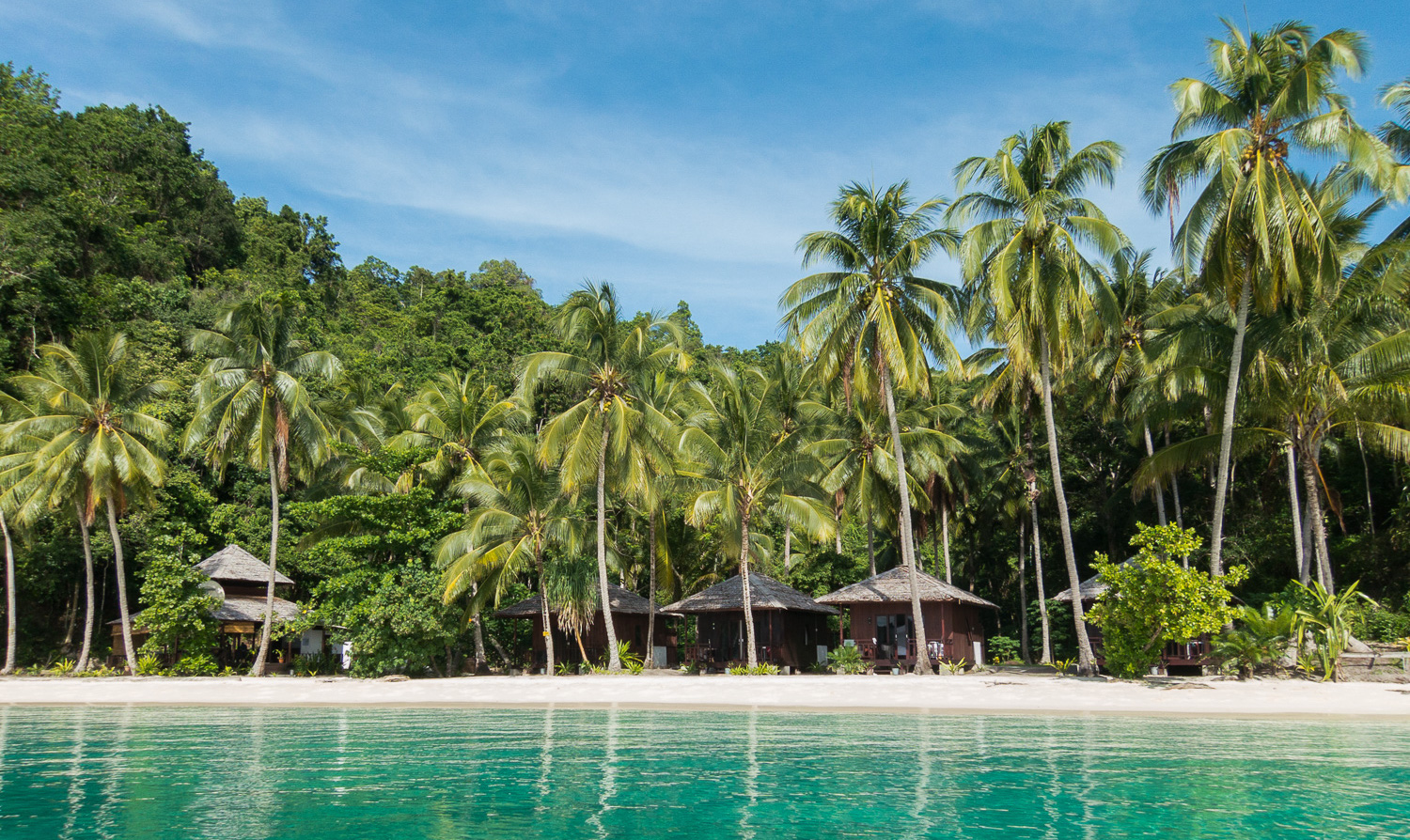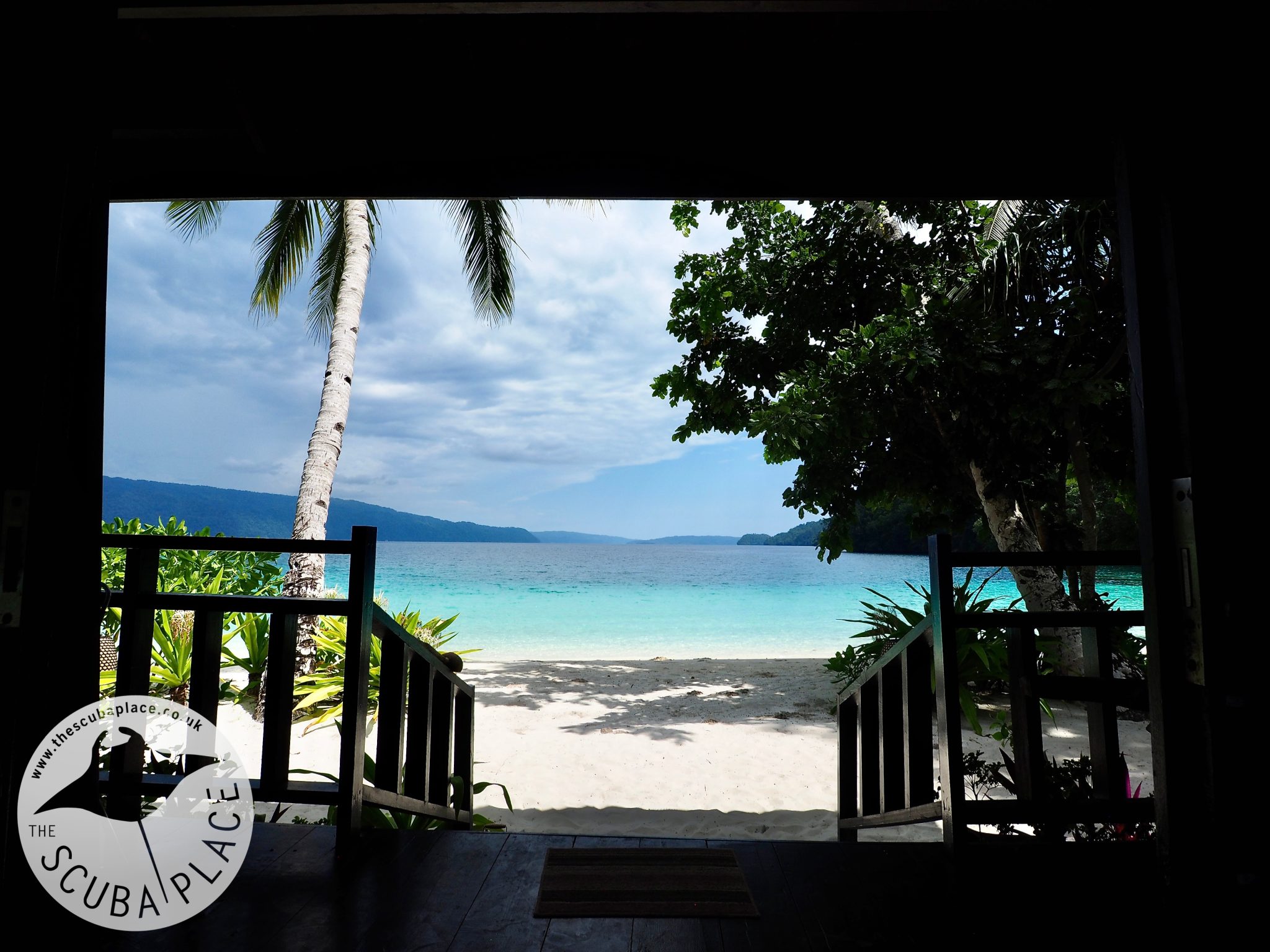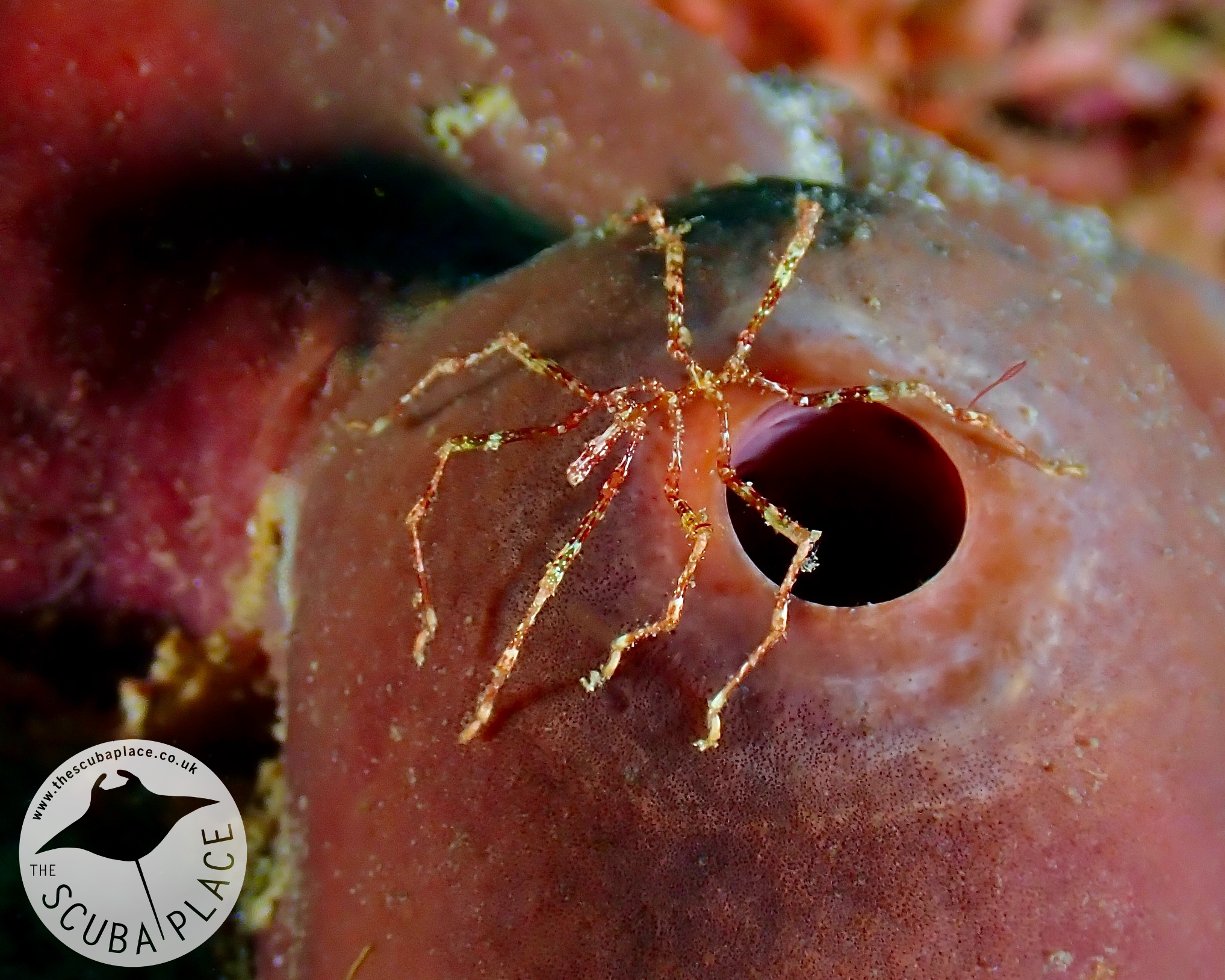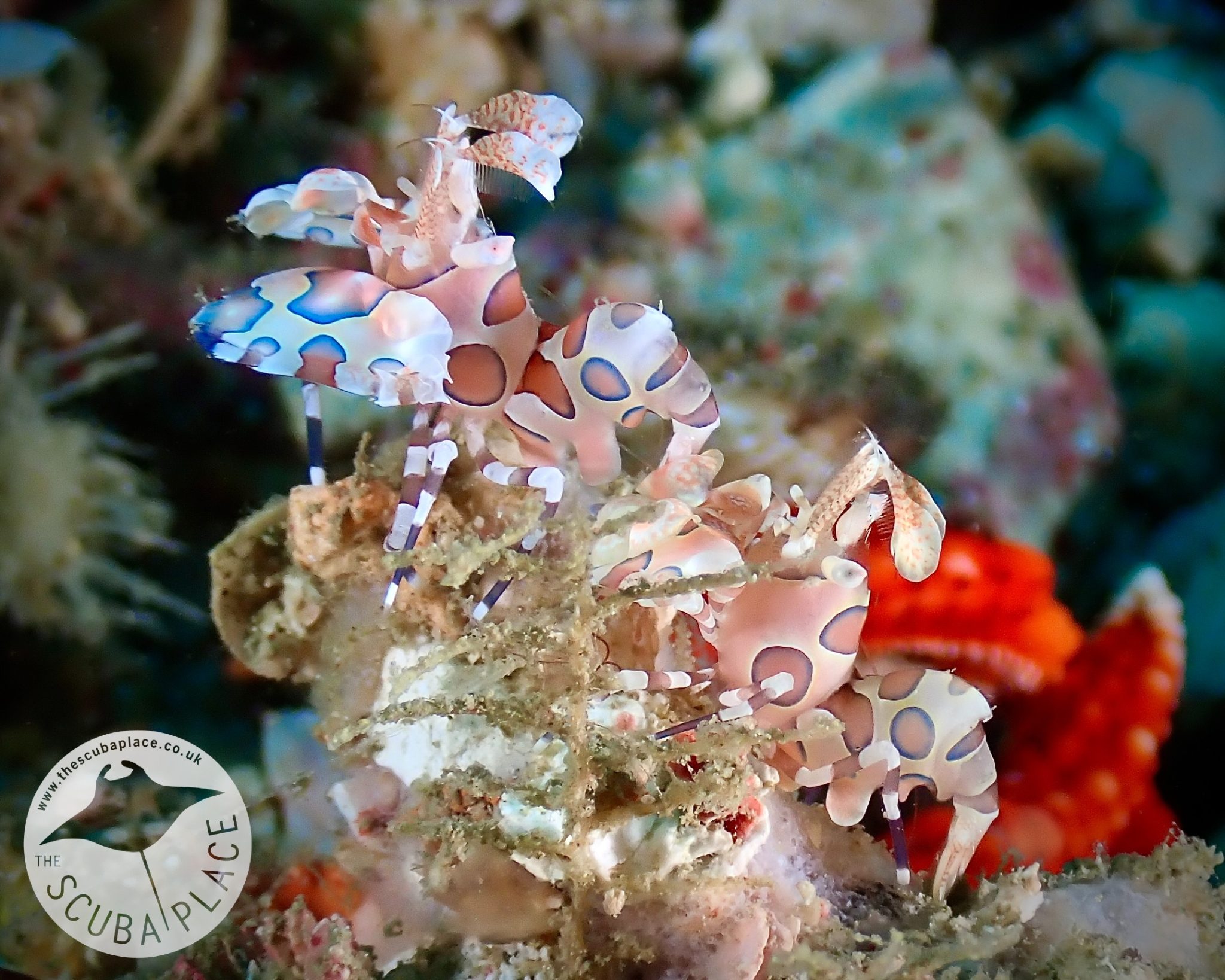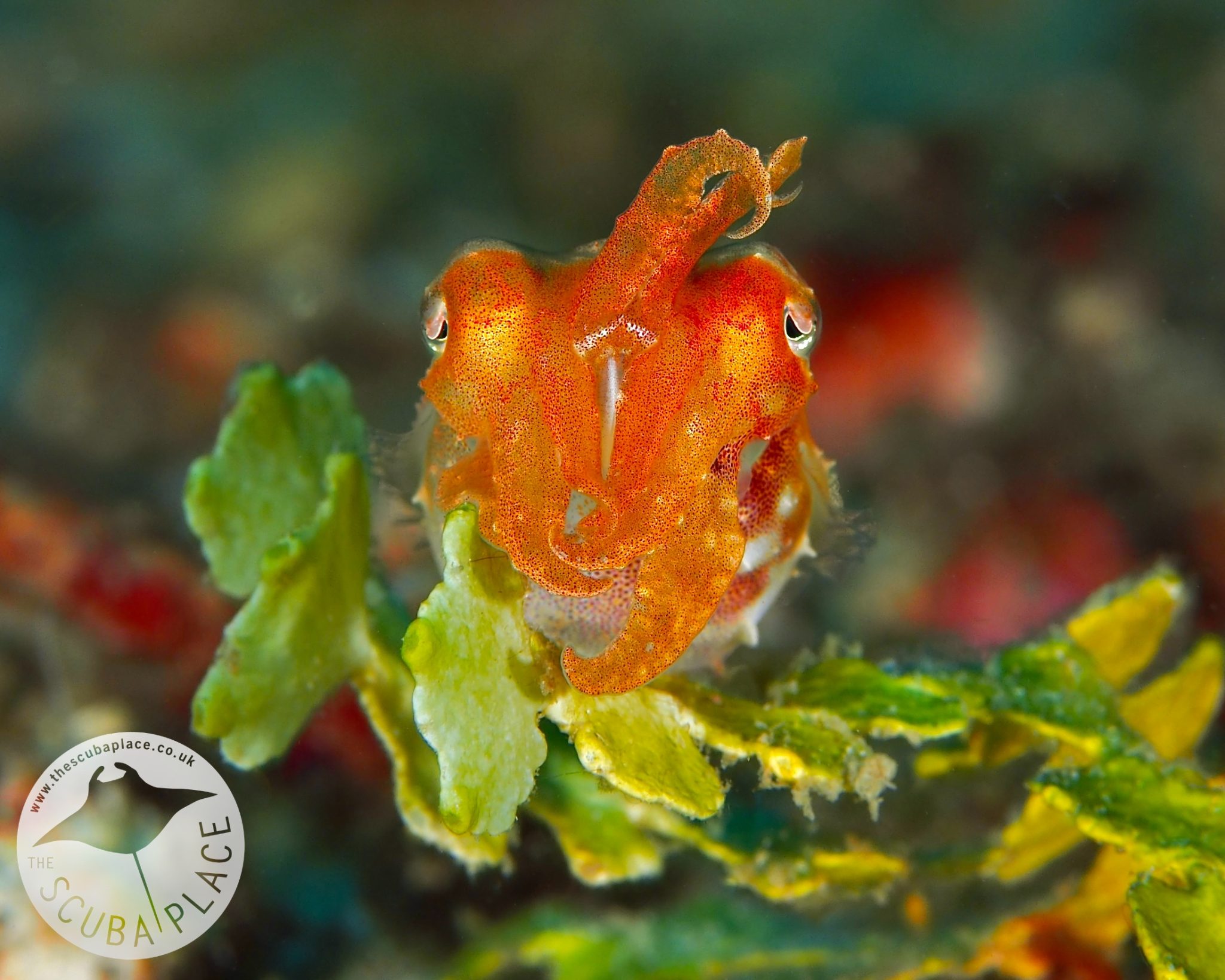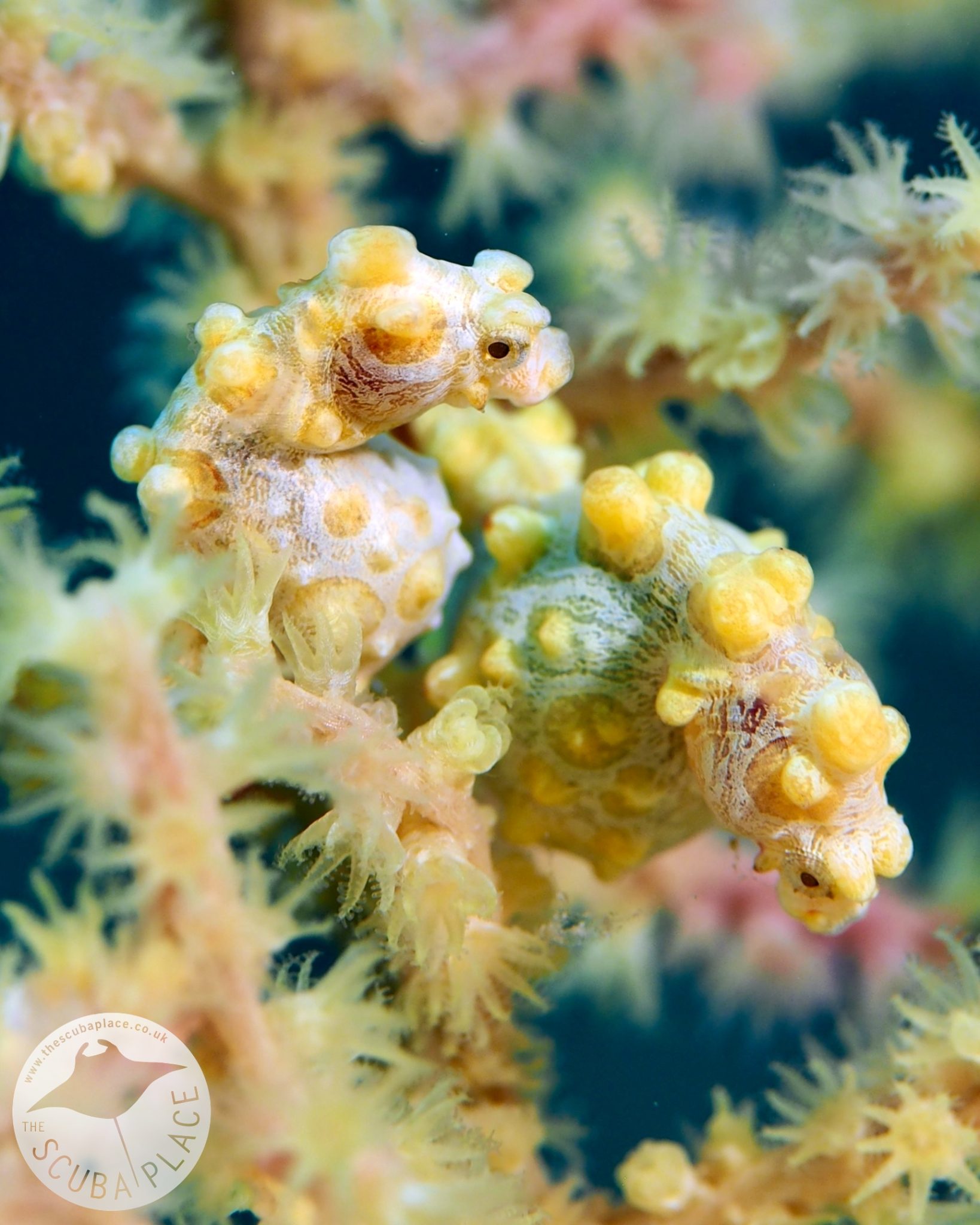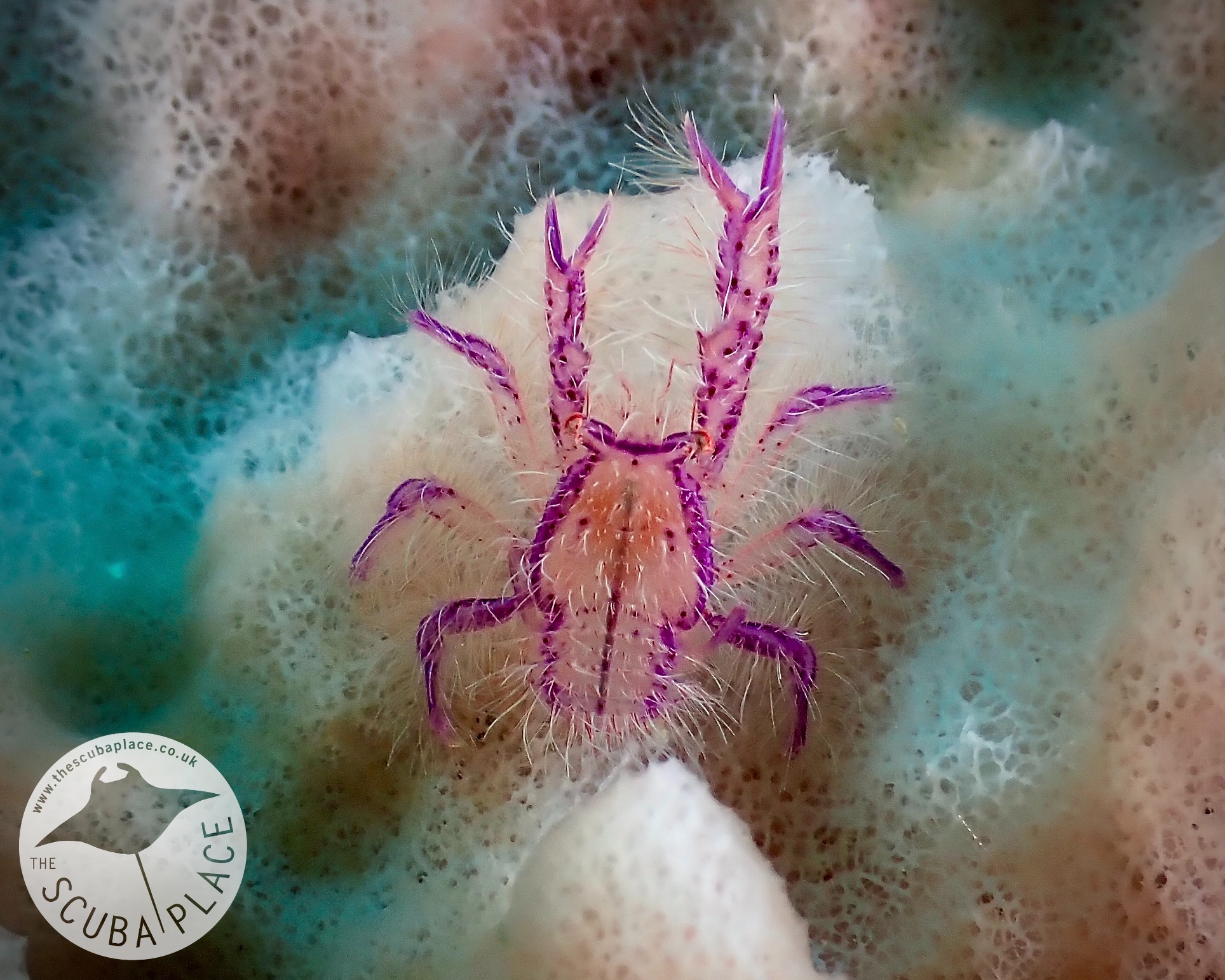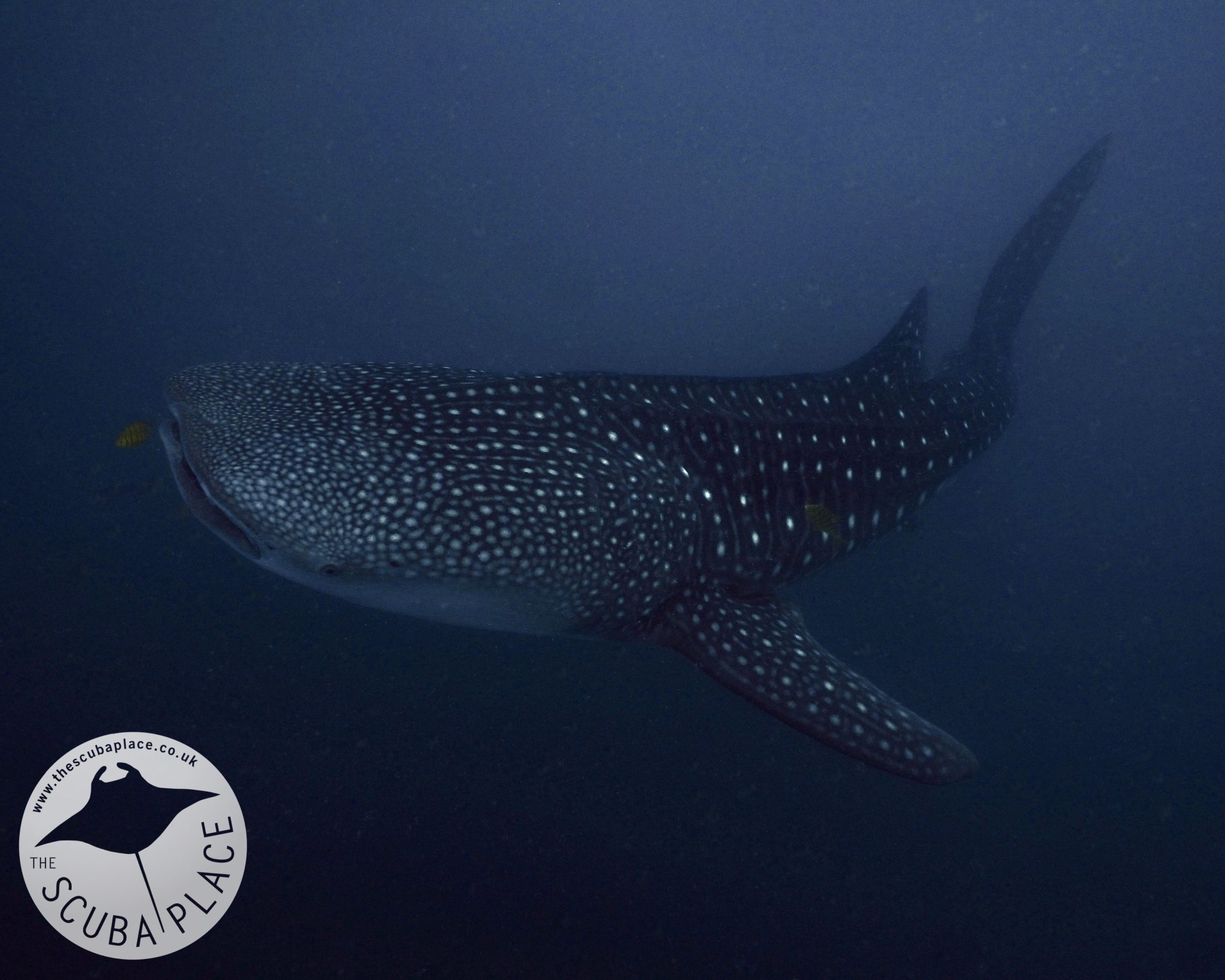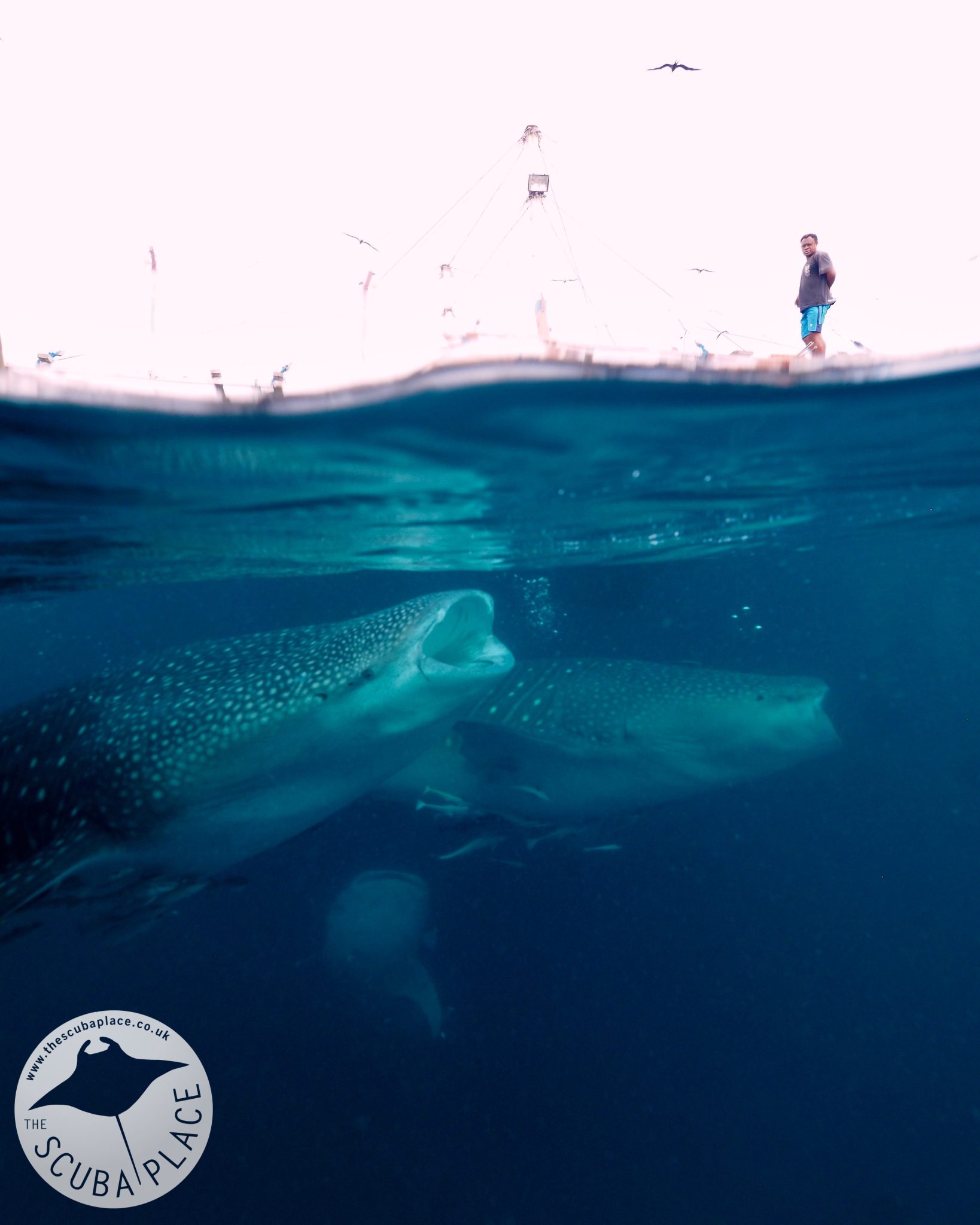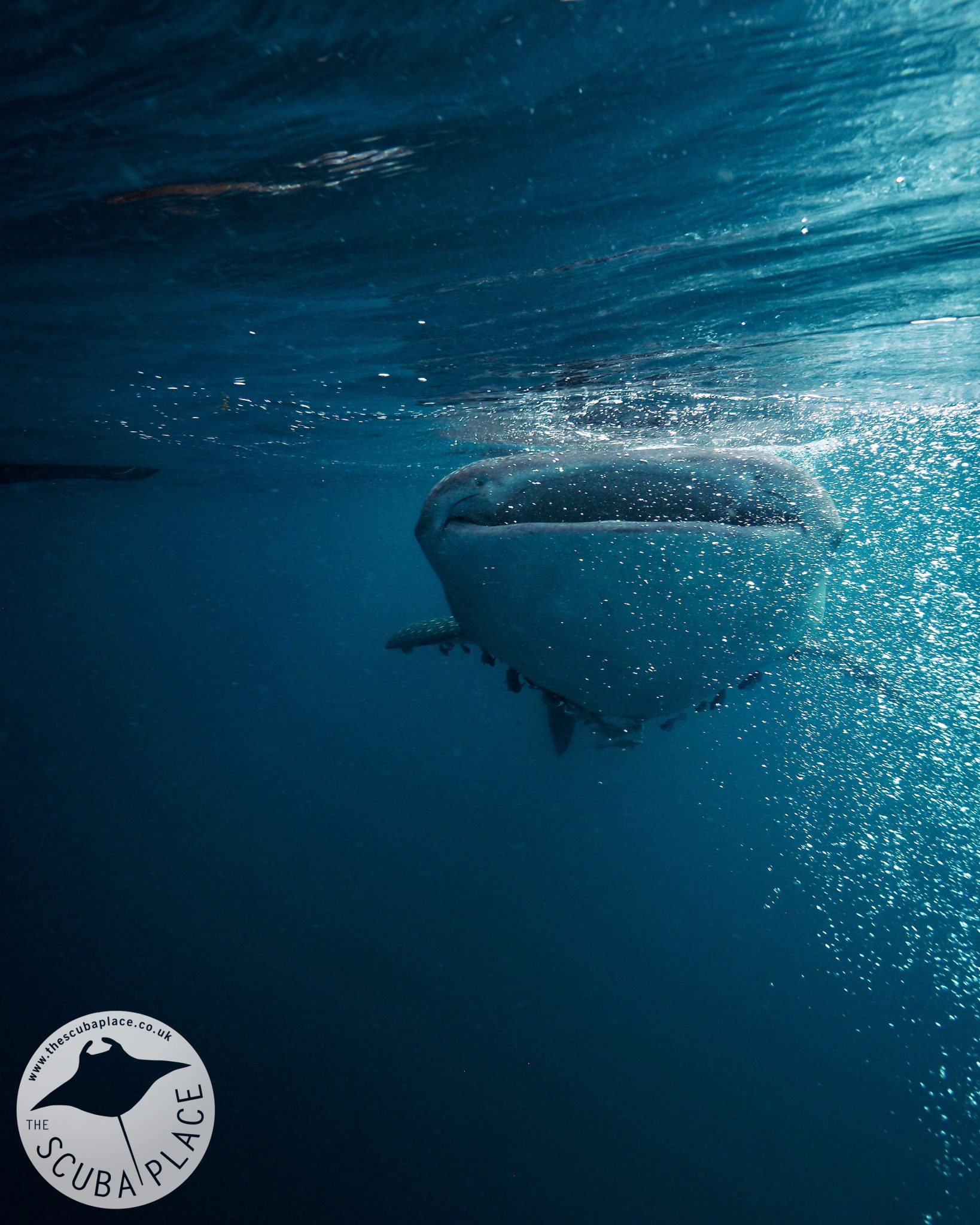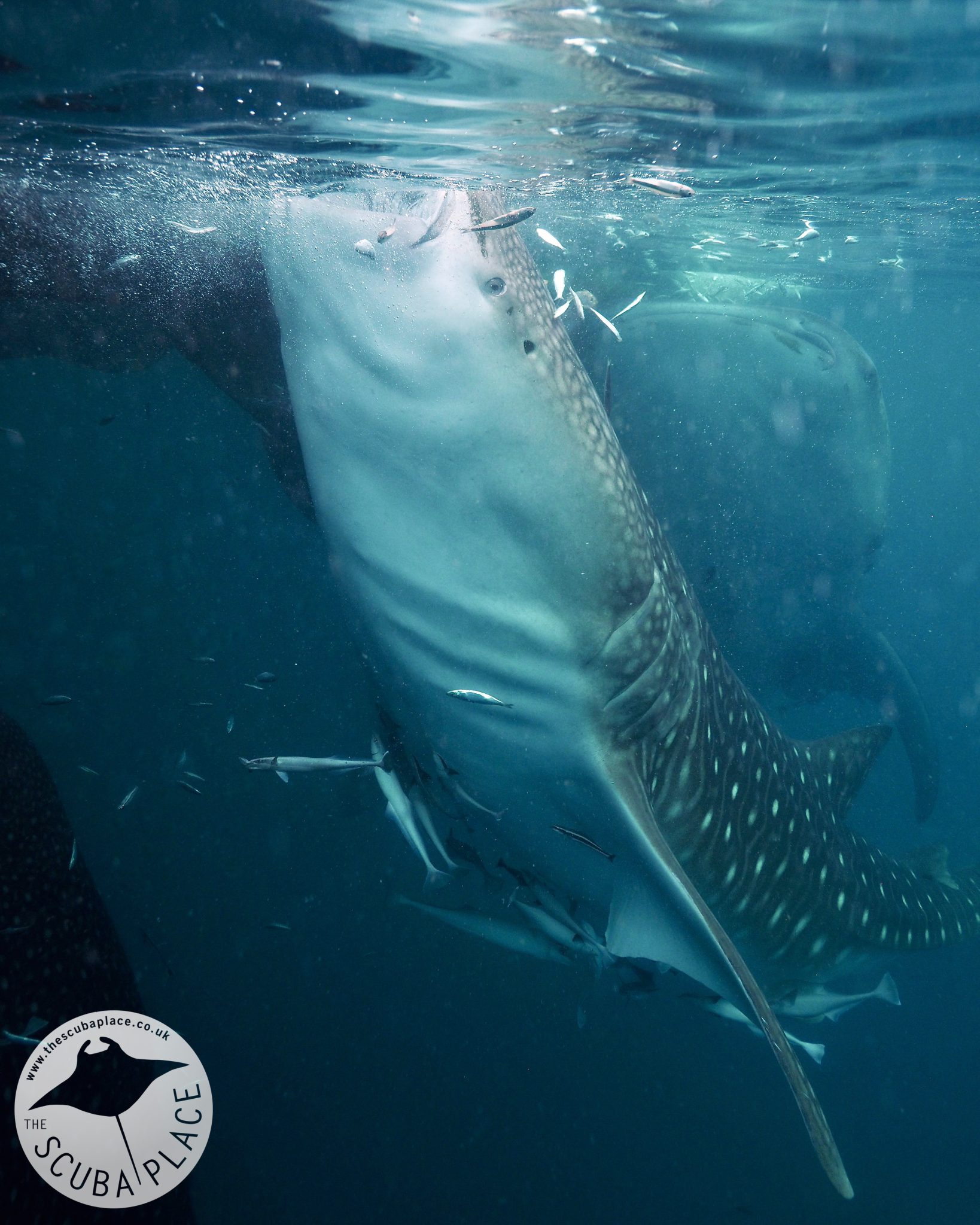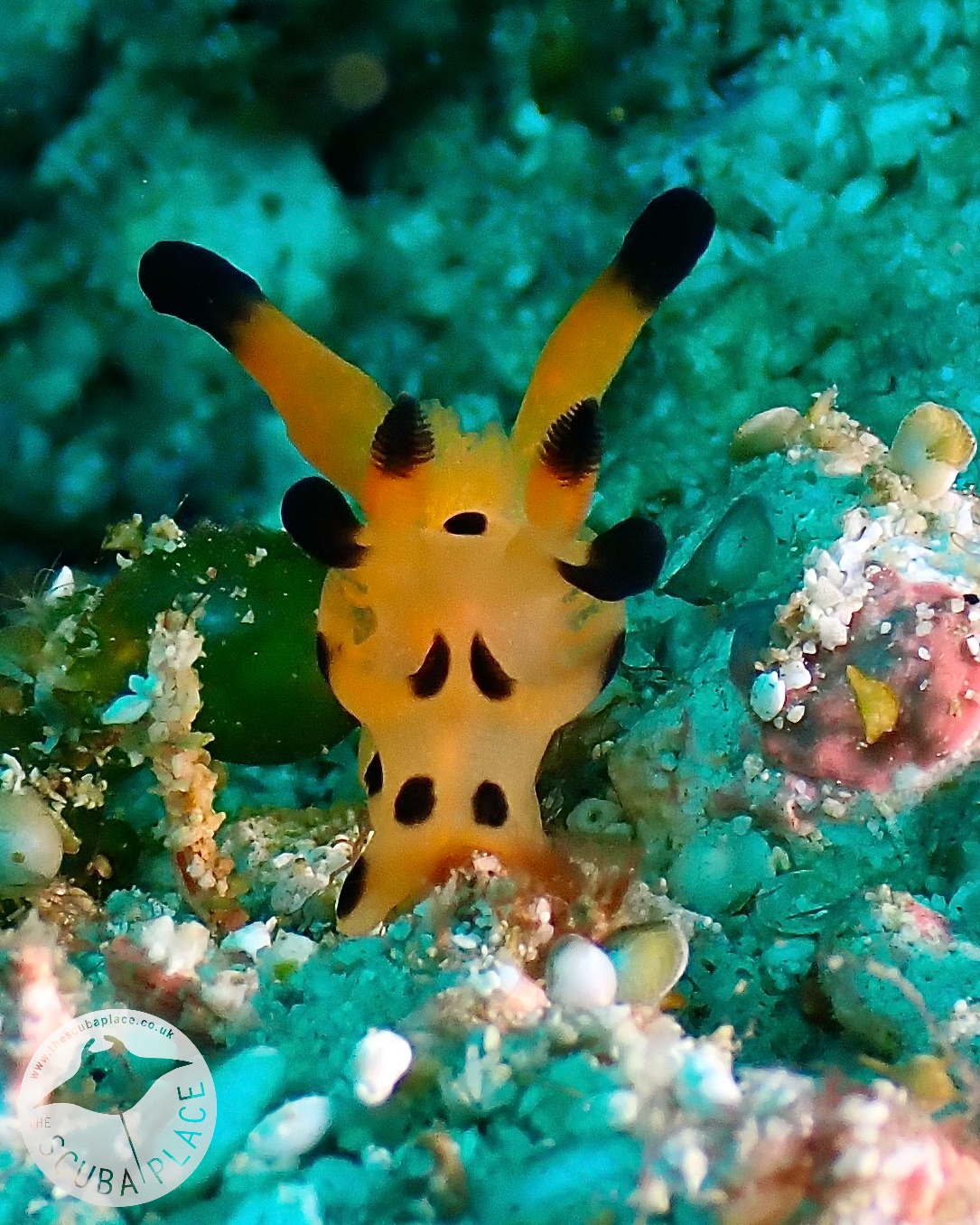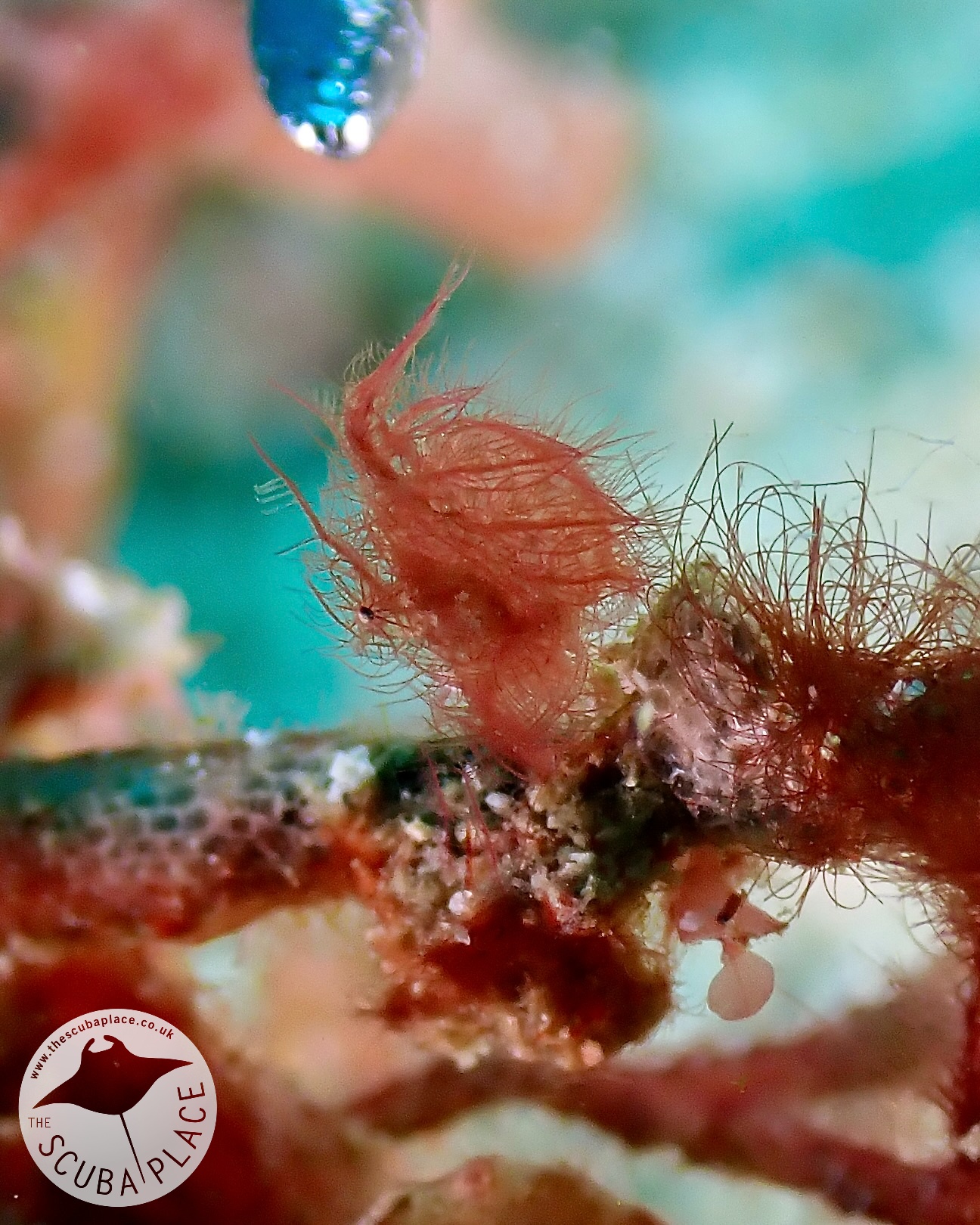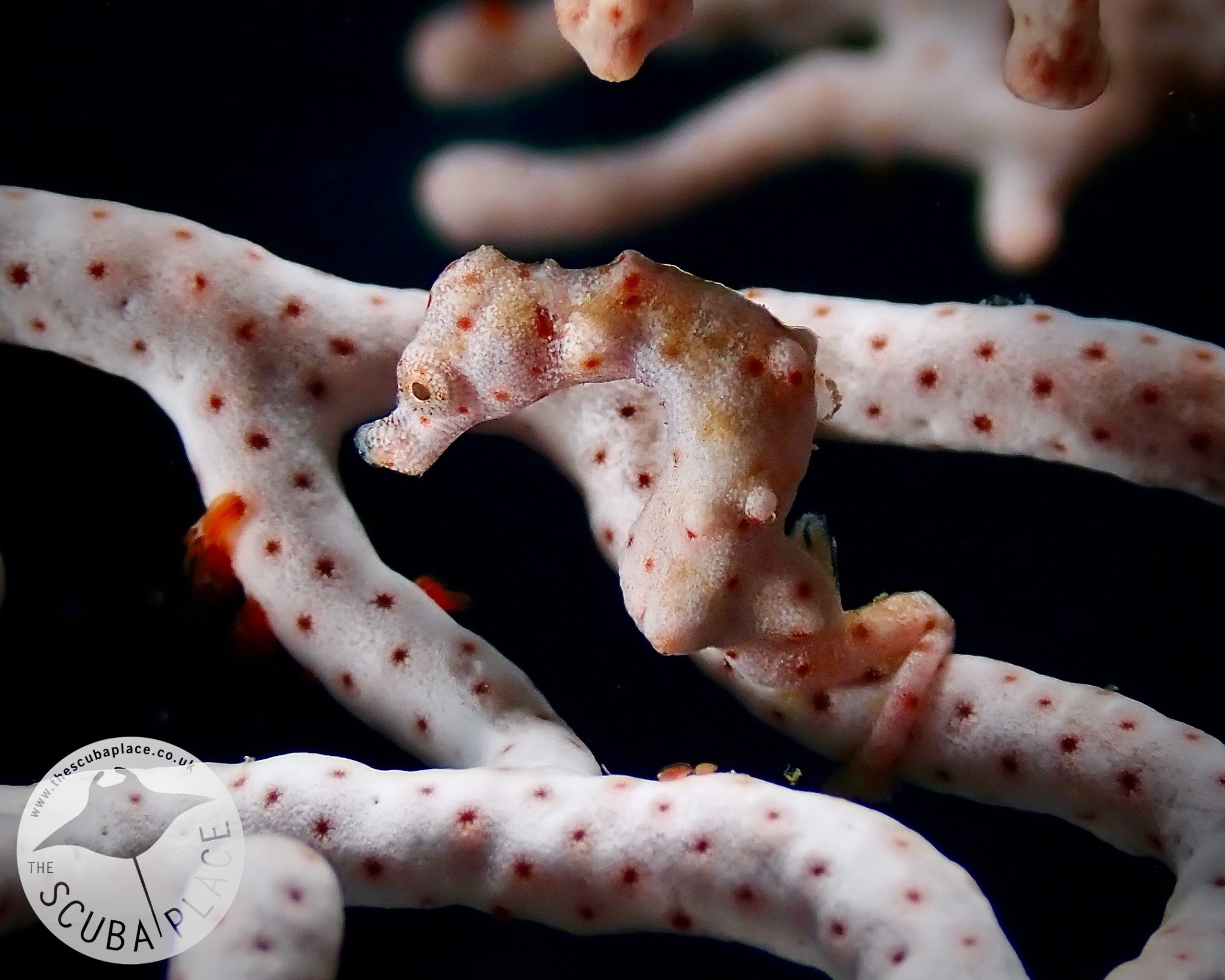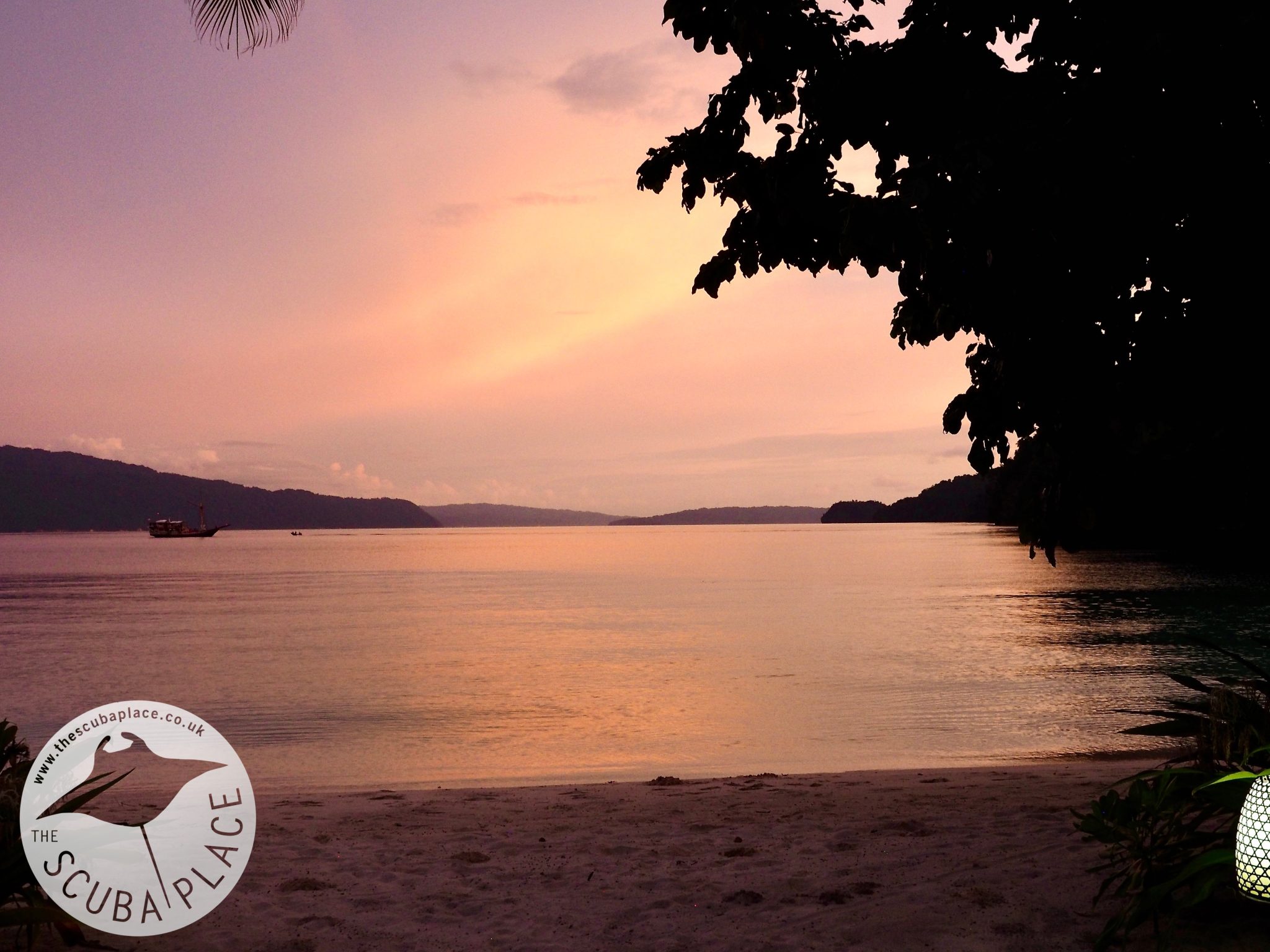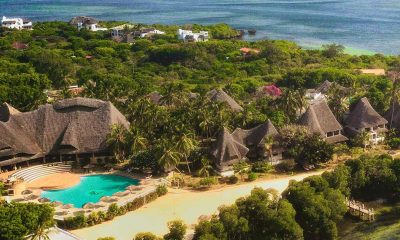Blogs
Dive Indonesia : Triton Bay Divers Trip Report
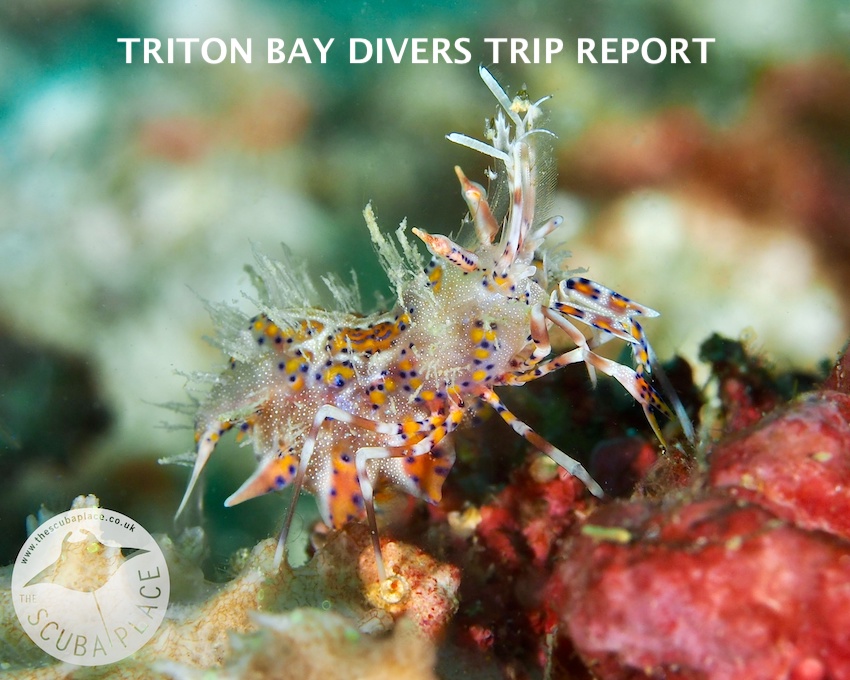
The Scuba Place spent January 2023 exploring four different resorts in Indonesia. This is Part Four and their Trip Report on Triton Bay Divers. Read Part One on Lembeh Resort here and Part Two on Murex Bangka here and Part Three on Murex Manado here.
“Remote, and Worth It” is the strap-line for Triton Bay Divers, this tiny island resort literally in the middle of nowhere – read on to find out if our experience agrees with this opening statement!
Most divers will have heard of the Coral Triangle – THE place to be when it comes to the best diving on the Planet. This is a bold statement we agree, and despite the arguments from the fanatical wreck or cold-water divers, in our opinion, it is pretty accurate!
The Birdshead Seascape is considered to be the epicentre of the Coral Triangle, and the three land masses that surround this area are Raja Ampat, Cenderawasih Bay and you guessed it – Triton Bay. Right in the very middle of the very best place to be – it sounds almost too good to be true!
Triton Bay is some 30 nautical miles from Kaimana, and the journey is all part of the Triton experience. A 90-minute speedboat ride through some of the most spectacular scenery you have ever seen. Speeding across some open ocean stretches, and then zipping through the channels between the islands, up close to the cliff face where the jungle competes with the rock for dominance, and the sea erodes the cliffs, making dramatic vistas in every direction. The bagan (fishing) platforms dot the horizon and are about the only hint of other people you will see.
Our crossing had us arriving right at sunset, one of the most spectacular that we have ever seen, and as we came around the final turn into Triton Bay Divers Resort, I can only say that it genuinely had an emotional impact. This place is, quite simply, breath-taking.
Imagine a mountain face, covered in jungle and palms, coming right down to the shoreline where powder-soft white sand borders the lagoon. On that beach, picture a small collection of authentic bungalows on stilts, each separated by palm trees, and each with a small terrace overlooking the bay. This could literally be the place where Bounty adverts were made! Remote – yes. Stunningly beautiful – yes to that too!
Stiff legs after the speedboat ride may have hampered the climbing out of the boat and onto the beach, and then the sand, as soft as flour straight from the mill, made our first few steps awkward, but nothing will take away the memory of arriving here! Bags are carried to your rooms, all of three to four metres away. Unload the dive kit into the crate provided, settle in, and relax. And then relax again, just to make sure you do it properly!
Each bungalow is a detached timber chalet sitting up on blocks with 4 steps (high enough to keep you dry at high tide), that lead to a timber deck – the perfect place to sit and watch the clouds float by. Inside, there is either a king bed or two single beds, a desk and ‘camera’ table, and an open wardrobe, together with a water dispenser. The four poster beds are draped with mosquito nets and a ceiling fan keeps the air moving. The rooms are very well-ventilated with double doors to the front and large windows to each side. The ensuite bathroom to the back is open-air and surrounded by a high wall ensuring total privacy.
We were a little concerned about the lack of air-conditioning, but the building design and warm breezes coming off the sea make this far less of an issue than we anticipated. Leaving the doors open all night was our approach, and this was quite magical – like sleeping in the wild – especially when joined by a snack-hunting vole!
Triton Bay offers full board with three meals a day plus snacks late in the afternoon. Breakfast is cereal or porridge, fresh fruit, toast and preserves, eggs to order, pancakes and other hot items. Tea, coffee, milk, fruit juice and water are always available from early in the morning, which we found excellent, being early risers. Lunch is typically a light meal – a main and dessert, and the evening meal is not dissimilar, but three courses. The style is very much local and authentic, and to us, absolutely delicious! Curries were mildly spiced with a separate dish of sambal always on the table for those who like it hot! Rice and noodles accompany most meals, and those with dietary preferences can be catered for if requested in advance. I ate one of the very best curries I have ever had here!
The pure beauty of this place makes you forget that you are there to dive, but three dive boats – between 6 rooms – are waiting to take you off to over 40 dive sites that can be found anywhere from 5 to 30 minutes away. You get it I am sure – you dive on your own or in very VERY small groups!
The vast majority of the dives are right next to the cliff faces of the small islands and pinnacles that are scattered throughout the area – you drop in on a sheer rock face and descend down to the reef, and then the sand beyond that if you fancy a critter dive – or do both! The maximum depth we hit during our trip was 28 metres – the vast majority of the dives are less than 25 metres, making for some very long dives. The guides are true experts with the keenest of eyesight – it is their backyard, and they know it well, finding subjects to order it seemed. I asked to see a Harlequin Shrimp, and they found four. Tiger Shrimp? Six. Blue-ringed Octopus – two ‘fighting’ and two more on their own, Wobbegongs? At least three – and the list goes on and on!
The reefs are immaculate and covered with huge soft and hard corals, packed to the brim with marine life. There are large rock formations, covered in colour, with overhangs and small caverns – the perfect place for a wobbegong to hide. There are reef shelves, walls, bommies and pinnacles, and then the sandy sea-bed where the critters hang out. This is, in our humble opinion, perhaps the most beautiful underwater landscape we have ever seen, totally untouched by people, and in the healthiest of conditions.
The list of stuff that we saw is endless, but it is safe to say that we saw creatures that we had never seen before on just about every dive. The Triton Bay walking shark, nudibranchs, crabs, squat lobsters, shrimp, wobbegongs, octopi and even 3 species of pygmy seahorse – we saw the lot! And it isn’t just the smaller marine life either – eagle rays, big stingrays, tuna and of course the turtles and wobbegongs, but to add to the list, whalesharks!
The whaleshark excursion is spectacular. An early start sees you navigating the bay under torchlight as you speed out in the dark to the open expanse of Triton Bay towards the fishing grounds. Here, the local bagans (boats with large platforms around them) drop their nets and light the water column, bringing in the bait fish. As the most spectacular sunrise lights up the sky for as far as you can see, pods of dolphins raced to the bagan grounds to join the whalesharks in their daily feeding. These huge animals used to damage the nets, so the fishermen keep back buckets of bait fish and sell them to the dive boats, and then throw the fish back into the water to the waiting whalesharks. To be in the water with these magnificent animals is always a pleasure, but we had our minds totally blown by having four full-size and one juvenile circling around us, feeding right in front of us, even knocking us out of the way! We had dolphins shooting through the group to grab a loose fish or two – the sound of their clicks and whistles was almost deafening!
After an adrenaline-fuelled hour, the beasties had had their fill and slowly vanished off into the distance – this was an experience of a lifetime, and we were totally lost for words on the way back – doing another dive en-route of course!
Night dives were incredibly special too – take five paces from the dive centre and you are in the water. Make five fin-cycles and you are over the reef – staghorn coral everywhere, and the home of the famous Triton Bay walking shark or epaulette shark unique to this area. A huge turtle sleeping in a coral bommie, octopi and squid hunting, and critters a plenty add to the haul, but let’s be honest – it is all about the shark! And at twilight on the house reef you can watch (and attempt to photograph) the mating of a massive school of flasher wrasse.
One of the best things we found about staying at Triton Bay Divers was the surface intervals. Not often something we get excited about, but imagine zipping along the channel to a private, totally isolated beach after your dive. The crew makes hot drinks to order, and biscuits of all sorts were yummy, but the real pleasure was being in the middle of absolutely nowhere – not another person to be seen except your buddy and the dive guides, who give you all the space you want, as it is their break too. Not another boat or plane, just you and the scenery. Our surface intervals got longer and longer each day as we spent ages snorkelling on the shallow reefs – the dive crew literally had to pull us out of the water!
I honestly do not have the words to describe how beautiful and peaceful this place is – a Jurassic landscape, covered with jungle, mountains in the distance, and the softest and whitest of sandy beaches (one is actually pink, but that is another story!) with the most spectacular underwater environment we have ever experienced.
To a certain extent, it pains me to tell this story, as it is a special place to us personally, full of memories. So special we almost don’t want other divers to discover it!!!
It is remote…. Be prepared to totally unplug – there’s no wifi, no satellite tv, and the power is turned off from 11pm to 6am. You’ll hear the birds and the bugs, even the odd small rodent found its way into our bungalow.
But it is so special. Triton Bay Divers delivers not only fabulous diving but an emotional impact. It is truly breathtaking, and I am genuinely thankful that I had the opportunity to experience such a place.
Remote… but Definitely Worth It!
Note: We’ve received an exciting update from Leeza, the owner of Triton Bay Divers. They are currently building two new Garden View guest rooms, a camera room and a compressor room, as well as adding a larger faster speedboat to transport guests to the resort in more comfort. All these new additions are expected to be in place for October 2023!
Key Facts :
- Getting there : Flights with Emirates Airlines to Manado depart from any major UK airport via Dubai and Jakarta or Singapore Airlines via Singapore and Jakarta. On Emirates from London Heathrow it was a 7-hour flight with a quick two-hour layover in Dubai followed by an 8-hour flight to Jakarta. We had a longer layover in Jakarta so we booked a room at FM7 Hotel, a quick 20 minutes from the airport for a much-needed shower and a kip. The comfortable double room was £36 and offers a free shuttle to and from the airport. We visited Sulawesi before heading to Triton Bay. We flew from Manado to Sorong and on to Kaimana. If you’re headed straight to Triton Bay you can fly from Jakarta to Kaimana. We were picked up at the airport by Triton Bay staff and after a quick drive we hopped on the resort boat for the two hour crossing.
- Air temperature : Tropical – average daily temperature throughout the year is 28-30°C, with the humidity at 85-90%. The area has two main seasons, and it is best to visit during the dryer months from October to early June.
- Water temperature : 26-29°C. A 1-3mm full suit or shorty will suit most.
- Visa requirement : Tourist visa is purchased on arrival or online for £30 or IDR 500,000 and is valid for 30 days.
- Health protocols : When we travelled, visitors were mandated to download an app “Pedulilindungi”. This required us to upload our proof of COVID vaccination and booster and approval was received within 24 hours. Upon arrival, we provided a QR code generated by the app, had our temperature taken and then we were off.
- Currency : Indonesian rupiah, US dollars or Euros on resort. We often find the exchange rate is better at the destination country. ATMs and exchange desks are available at the larger airports. There is no card machine (no wifi) so make sure you have adequate cash on hand.
- Electricity : 230V with European style (round pin) two-prong plugs. Our adaptor worked without issue, and remember the power is turned off every night.
- Internet and Wi-Fi : There is little to no wifi at the resort. It’s the best place to totally unplug.
Price Guide: Expect from £4200 per person based on two sharing a Seaview Deluxe bungalow for a 10-night itinerary with full board and 24 dives. Return flights and transfers are included. A marine park fee of 1,000,000Rp (£60) is payable at resort. Other extras include soft drinks, beer and wine, purchased snacks and extra dives.
Our Advice: With a long travel time consider the adding additional destinations in Indonesia to your trip. We visited Sulawesi prior to Triton Bay which made for an amazing and varied diving holiday. Let us help you design your dream dive holiday.
Packing tips :
- Insect repellent : being this close to the water and with the jungle just steps away the mozzies came out at dawn and dusk. There’s always some spray at the bar for guests, but we were happy to have some in our bungalow as well.
- Rechargeable fan(s) : the resort shuts off the power generator at 11pm each night until 6am (or 4am if anyone is headed out to find the whalesharks) so a rechargeable fan or two was a necessity. They were also useful on domestic flights! Amazon has lots of options!
- Snorkel : make sure you tuck your snorkel into your dive bag and take it with you daily! We spent so many surface intervals with our faces in the water! There was always something to see!
Snacks : we grabbed a few snacks at the local airport and the resort was happy to keep the bar fridge for us. Perfect for when that craving hit.
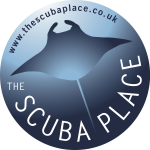 The Scuba Place designs and builds custom scuba diving holidays. With personal knowledge and experience diving in many of our destinations, there is no one better to help build your dream dive holiday. Come Dive with Us!
The Scuba Place designs and builds custom scuba diving holidays. With personal knowledge and experience diving in many of our destinations, there is no one better to help build your dream dive holiday. Come Dive with Us!
Call us at 020 3515 9955 or email at reservations@thescubaplace.co.uk
Find us on
Facebook : https://www.facebook.com/thescubaplace
Instagram : https://www.instagram.com/the.scuba.place/
YouTube : https://www.youtube.com/channel/UCH684OdioYirI-zzdT58Ceg
Blogs
Northern Red Sea Reefs and Wrecks Trip Report, Part 3: The Mighty Thistlegorm

Jake Davies boards Ghazala Explorer for an unforgettable Red Sea diving experience…
Overnight, the wind picked up, making the planned morning dive a bit bumpy on the Zodiacs to the drop point on Thomas Reef. There, we would dive along the reef before descending through the canyon and then passing under the arch before ascending the wall with a gentle drift. The site provided great encounters with more pelagic species, including shoals of large barracuda, tuna, and bigeye trevally.
Once back on the boat, it was time to get everything tied down again as we would head back south. This time, with the wind behind us, heading to Ras Mohammed to dive Jackfish Alley for another great gentle drift wall dive before then heading up the coast towards the Gulf of Suez to moor up at the wreck of the Thistlegorm. This being the highlight wreck dive of the trip and for many onboard, including myself, it was the first time diving this iconic wreck. I had heard so much about the wreck from friends, and globally, this is a must on any diver’s list. Fortunately for us, there was only one other boat at the site, which was a rarity. A great briefing was delivered by Ahmed, who provided a detailed background about the wreck’s history along with all the required safety information as the currents and visibility at the site can be variable.

Kitting up, there was a lot of excitement on deck before entering the water and heading down the shoreline. Descending to the wreck, there was a light northerly current which reduced the visibility, making it feel more like the conditions that can be found off the Welsh coast. At 10m from the bottom, the outline of the wreck appeared as we reached the area of the wreck which had been bombed, as our mooring line was attached to part of the propeller shaft. Arriving on deck, instantly everywhere you looked there were many of the supplies which the ship was carrying, including Bren Carrier tanks and projectiles that instantly stood out.

We headed around the exterior, taking a look at the large propeller and guns mounted on deck before entering the wreck on the port side to take a look in the holds. It was incredible to see all the trucks, Norton 16H, and BSA motorcycles still perfectly stacked within, providing a real snapshot in time.

Overall, we had four dives on the Thistlegorm, where for all of the dives we were the only group in the water, and at times, there were just three of us on the whole wreck, which made it even more special, especially knowing that most days the wreck has hundreds of divers. Along with the history of the wreck, there was plenty of marine life on the wreck and around, from big green turtles to batfish, along with shoals of mackerel being hunted by trevally. Some unforgettable dives.

The final leg of the trip saw us cross back over the Suez Canal to the Gobal Islands where we planned to stay the night and do three dives at the Dolphin House for the potential of sharing the dive with dolphins. The site, which included a channel that was teeming with reef fish, especially large numbers of goatfish that swam in large shoals along the edge of the reef. These were nice relaxing dives to end the week. Unfortunately, the dolphins didn’t show up, which was okay as like all marine life they are difficult to predict and you can’t guarantee what’s going to be seen. With the last dive complete, we headed back to port for the final night where it was time to clean all the kit and pack before the departure flight the next day.

The whole week from start to finish on Ghazala Explorer was amazing; the boat had all the facilities you need for a comfortable week aboard. The crew were always there to help throughout the day and the chefs providing top quality food which was required after every dive. The itinerary providing some of the best diving with a nice mixture of wreck and reef dives. I would recommend the trip to anyone, whether it’s your first Red Sea liveaboard in the Red Sea or you’re revisiting. Hopefully, it’s not too long before I head back to explore more of the Red Sea onboard Ghazala Explorer.

To find out more about the Northern Red Sea reef and wrecks itineraries aboard Ghazala Explorer, or to book, contact Scuba Travel now:
Email: dive@scubatravel.com
Tel: +44 (0)1483 411590
Photos: Jake Davies / Avalon.Red
Blogs
Northern Red Sea Reefs and Wrecks Trip Report, Part 2: Wall to Wall Wrecks

Jake Davies boards Ghazala Explorer for an unforgettable Red Sea diving experience…
The second day’s diving was a day full of wreck diving at Abu Nuhas, which included the Chrisoula K, Carnatic, and Ghiannis D. The first dive of the day was onto the Chrisoula K, also known as the wreck of tiles. The 98m vessel remains largely intact where she was loaded with tiles which can be seen throughout the hold. The stern sits at 26m and the bow just below the surface. One of the highlights of the wreck is heading inside and seeing the workroom where the machinery used for cutting the tiles are perfectly intact. The bow provided some relaxing scenery as the bright sunlight highlighted the colours of the soft coral reef and the many reef fish.

Following breakfast, we then headed to the next wreck, which was the Carnatic. The Carnatic is an 89.9m sail steamer vessel that was built in Britain back in 1862. She ran aground on the reef back in 1869 and remains at 27m. At the time, she was carrying a range of items, including 40,000 sterling in gold. An impressive wreck where much of the superstructure remains, and the two large masts lay on the seafloor. The wooden ribs of the hull provide structures for lots of soft corals, and into the stern section, the light beams through, bouncing off the large shoals of glass fish that can be found using the structure as shelter from the larger predators that are found outside of the wreck.

The final wreck at Abu Nuhas was the Ghiannis D, originally called ‘Shoyo Maru,’ which was 99.5m long and built in Japan back in 1969 before becoming a Greek-registered cargo ship in 1980. The ship then ran aground on the reef on April 19th, 1983, and now sits at the bottom at a depth of 27m. Heading down the line, the stern of the ship remains in good condition compared to the rest of the hull. The highlight of the wreck, though, is heading into the stern section and down the flights of stairs to enter the engine room, which remains in good condition and is definitely worth exploring. After exploring the interior section of the ship, we then headed over to see the rest of the superstructure, where it’s particularly interesting to see the large table corals that have grown at the bow relatively quickly considering the date the ship sank. After surfacing and enjoying some afternoon snacks, we made sure everything was strapped down and secured as we would be heading north and crossing the Gulf of Suez, where the winds were still creating plenty of chop.

The next morning, it was a short hop to Ras Mohammed Nature Reserve for the next couple of days of diving. The 6am wake-up call came along with the briefing for the first site we would be diving, which was Shark & Yolanda. The low current conditions allowed us to start the dive at Anemone City, where we would drift along the steep, coral-filled wall. These dives involved drifts, as mooring in Ras Mohammed wasn’t allowed to protect the reefs. As a dive site, Shark & Yolanda is well-known and historically had a lot of sharks, but unfortunately not so many in recent years, especially not so early in the season. However, there was always a chance when looking out into the blue.

The gentle drift took us along the steep walls of the site, with plenty of anemone fish to be seen and a huge variety of corals. It wasn’t long into the dive before we were accompanied by a hawksbill turtle, who drifted with us between the two atolls before parting ways. Between the two reefs, the shallow patch with parts of coral heads surrounded by sand provided the chance to see a few blue-spotted stingrays that were mainly resting underneath the corals and are always a pleasure to see. With this being the morning dive, the early sunlight lit up the walls, providing tranquil moments. Looking out into the blue, there was very little to be seen, but a small shoal of batfish shimmering underneath the sunlight was a moment to capture as we watched them swim by as they watched us.

Towards the end of the dive, we stopped at the wreck of the Jolanda where the seafloor was scattered with toilets from the containers it was carrying. This provided a unique site to make a safety stop, which was also accompanied by a large barracuda slowly swimming by, along with a hawksbill turtle calmly swimming over the reef as the sun rays danced in the distance.
For the next dive, we headed north to the Strait of Tiran to explore the reefs situated between Tiran Island and Sharm El Sheik, which were named after the British divers who had found them. We started on Jackson before heading to Gordons Reef, where we also did the night dive. All the atolls at these sites provided stunning, bustling coral reefs close to the surface and steep walls to swim along, which always provided the opportunity to keep an eye out for some of the larger species that can be seen in the blue. Midwater around Jackson Reef was filled with red-toothed triggerfish and shoals of banner fish, which at times were so dense that you couldn’t see into the blue. Moments went by peacefully as we enjoyed the slow drift above the reef, watching these shoals swim around under the mid-afternoon sun.

The night dive at Gordon’s Reef was mainly among the stacks of corals surrounded by sand, which was great to explore under the darkness. After some time circling the corals, we came across what we were really hoping to find, and that was an octopus hunting on the reef. We spent the majority of the dive just watching it crawl among the reef, blending into its changing surroundings through changes in colour and skin texture. It’s always so fascinating and captivating to watch these incredibly intelligent animals, in awe of their ability to carry out these physical changes to perfectly blend into the reef. Before we knew it, it was time to head back to the boat to enjoy a well-deserved tasty dinner prepared by the talented chefs onboard.
Check in for the 3rd and final part of this series from Jake tomorrow!
To find out more about the Northern Red Sea reef and wrecks itineraries aboard Ghazala Explorer, or to book, contact Scuba Travel now:
Email: dive@scubatravel.com
Tel: +44 (0)1483 411590
Photos: Jake Davies / Avalon.Red
-

 News3 months ago
News3 months agoHone your underwater photography skills with Alphamarine Photography at Red Sea Diving Safari in March
-

 News3 months ago
News3 months agoCapturing Critters in Lembeh Underwater Photography Workshop 2024: Event Roundup
-

 Marine Life & Conservation Blogs3 months ago
Marine Life & Conservation Blogs3 months agoCreature Feature: Swell Sharks
-

 Blogs2 months ago
Blogs2 months agoMurex Resorts: Passport to Paradise!
-

 Blogs2 months ago
Blogs2 months agoDiver Discovering Whale Skeletons Beneath Ice Judged World’s Best Underwater Photograph
-

 Gear Reviews3 weeks ago
Gear Reviews3 weeks agoGEAR REVIEW – Revolutionising Diving Comfort: The Sharkskin T2 Chillproof Suit
-

 Marine Life & Conservation2 months ago
Marine Life & Conservation2 months agoSave the Manatee Club launches brand new webcams at Silver Springs State Park, Florida
-

 Gear Reviews3 months ago
Gear Reviews3 months agoGear Review: Oceanic+ Dive Housing for iPhone


